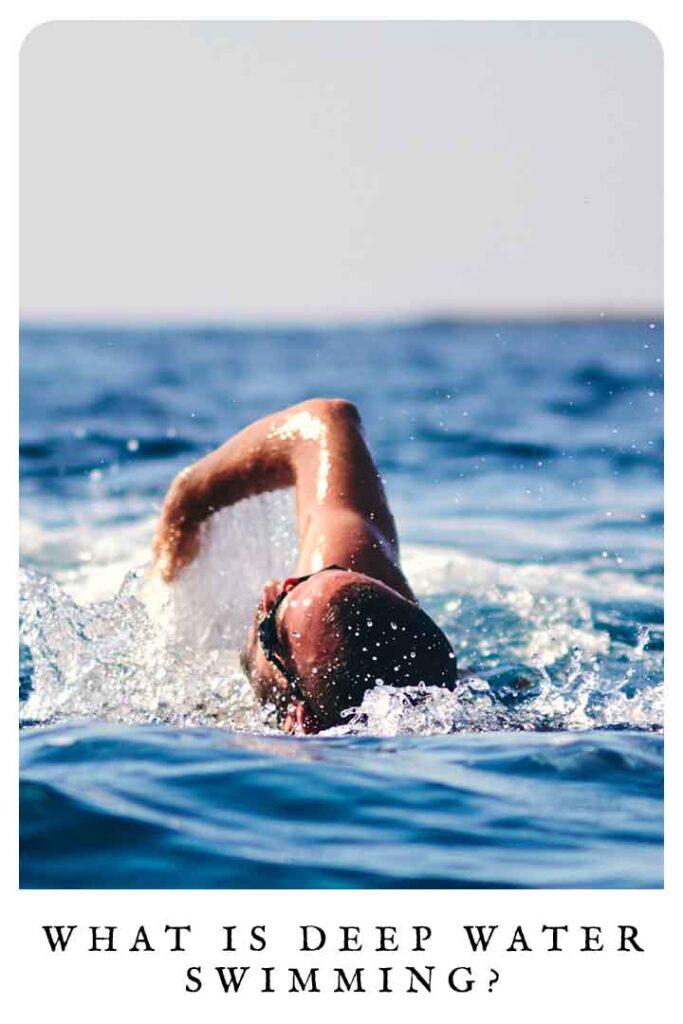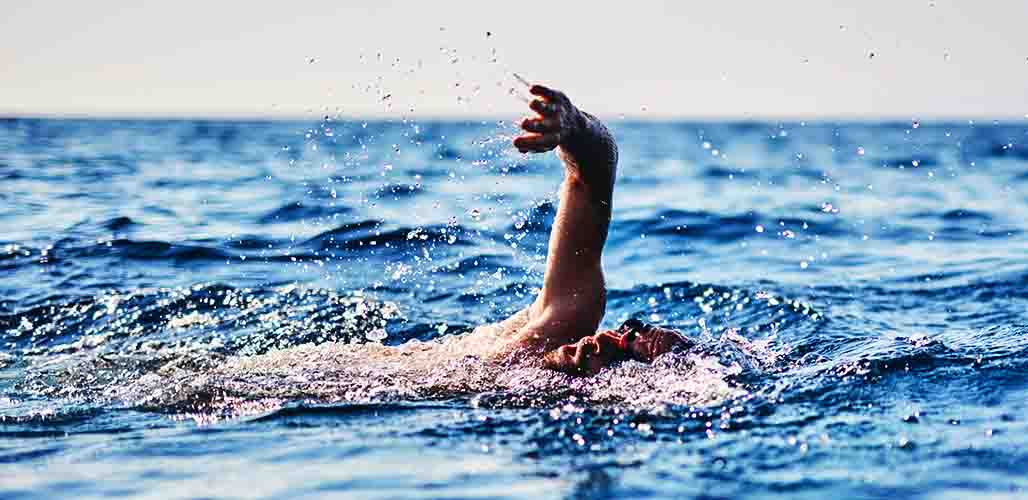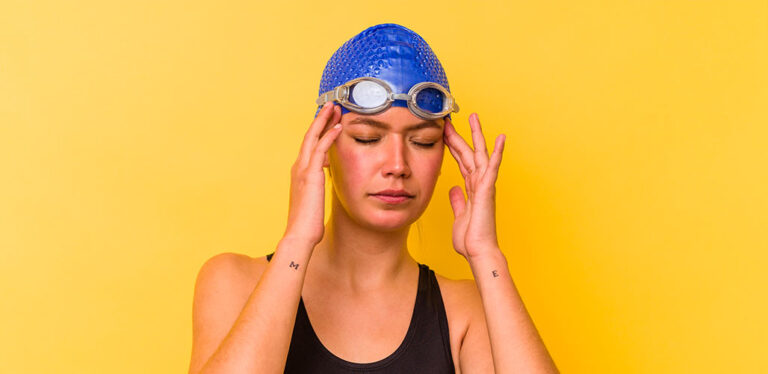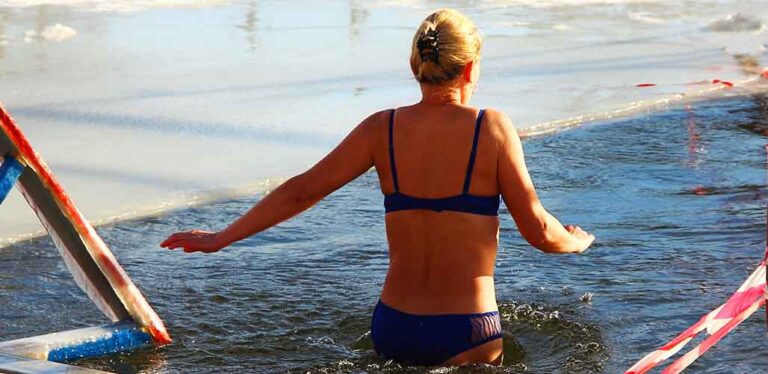How To Swim Deep Water
One of my scariest memories from starting swimming was when I couldn’t feel the pool floor with my feet any more. This is an all too familiar feeling for many kids and beginners in the swimming pool. Straying out of that comfort zone and finding yourself in the deep end can happen all too easily.
Most public swimming pools are usually in two halves, the shallow end and the deep end. Deep water swimming is the ability to swim at the pool’s deep end. In this article, I will explain why there is a deep end at the swimming pool, who uses it and why people swim there. I will also look at the dangers of deep water swimming for kids and beginners, and talk about how to swim deep water safely. Join me as we dive a little deeper. Read on to find out more!
Contents
- What is deep water swimming?
- Should I swim differently in the deep end of the pool?
- How to overcome a fear of deep water
- Why is it hard to swim in deep water?
- Tips for swimming in deep water
What is Deep Water Swimming?
Individuals are in deep water when the water level is above their chest height. In a typical pool in your local area, the deep end of the pool is usually 6.6 ft (2M) deep, while the shallow end is around 4 ft (1M). If the pool has a diving area, the pool may be as deep as 18 ft (5.5M). So, you’re swimming in deep water when you’re swimming in water that reaches your chest or above if you’re standing on the pool floor.
Should I Swim Differently in the Deep End of the Pool?
It’s important to know that our bodies act the same in deep water as in shallow water. How your body floats and your ability to swim are the same in deep water as in shallow water. It doesn’t matter how deep the water is. If you know that your body will float and move the same way in deep water as in shallow water, it should be easier to swim in deep water. The hardest part will be overcoming the fear of not being able to touch the bottom of the pool.
How to Overcome a Fear of Deep Water
First of all, overcoming all the challenges and fears you face while learning to swim is worth it. Being able to swim is a skill for life and one that you can pass on to your kids and others. The benefits of swimming are endless. From health and fitness to confidence building to self-rescue when around water, swimming has it all.
For many beginners, getting used to being in the water is a big challenge. Getting comfortable in the pool can take time. Still, with a good swimming instructor and plenty of encouragement, there’s usually a happy ending. Those people often go on to become proficient swimmers. Unfortunately, the fear of deep water can be a much more significant challenge.

Fear of the Deep
Even if you know how to swim and are good at it in shallow water, you might be afraid of the pool’s deep end. Fear of deep water is hard to overcome mentally when learning to swim or trying to improve your technique and performance. If you are afraid of deep water, you need to take the time to figure out why you are worried. There are a lot of things you can try to help you get over your fear of deep water. Including:
- Ease yourself in gently
- Swim with a friend that can help you if you panic
- Use floatation devices until you’re used to the feeling of being in deep water
- Swim close to the edge of the pool so you can grab the side
- And more.
It’s important to face your fears, but you should do so under the watchful eye of a lifeguard. Working with a swim instructor who teaches people afraid of water how to swim can be beneficial.
Why is Swimming in Deep Water Harder?
Fear of swimming in deep water or even fear of water can make us nervous and tighten our muscles making it very hard to swim. Tension in your body as you try to swim is way too challenging and will lead to much discomfort in your body. So, you need to tackle this fear and tension if you want swimming in deep water to become easier.
Get used to floating on the surface without doing anything else. Loosen up your limbs. Notice that when you breathe in, your body floats up more, and when you breathe out, you tend to sink. Believe it or not, your lungs, when full, will help you float. They act like two balloons and keep you buoyant. Try to keep a good amount of air in your lungs at all times and control your breathing so you can float comfortably. Float on your back until you feel relaxed and comfortable in this position and can easily stay afloat. A starfish float is ideal. Next up are a few more tips to help you feel more confident in deep water.
Don’t Depend on the Pool Floor
Now that you know how to float comfortably in the water try swimming forward without touching the bottom for a few meters. Stay calm, swim forward, and stop after a few meters. Change directions without touching the bottom, and then swim back. Do this a few times until you feel like you’ve got it down. Start swimming in water that isn’t too deep, and as you get more confident, go deeper.
The next step is to swim in deep water. You now know that your body will float and move the same way in deep water as in shallow water. It’s time to head for the deep end. You’ve got this!
Start at the Pool Perimeter
It’s best to swim in the deep end along the outside lanes. If this is your first time, the outer lanes have ladders that let you get into the deep end safely and slowly. The right way to get into deep water is to use the entry ladder or slip into the water by sitting on a ledge and slowly lowering yourself.
We swim on the outside lanes to always get to the ledge if necessary. We will be using a lot of energy, so we can hold on to the ledge when we get tired. As you gain confidence and get used to the pool floor not being there, try not to panic and trust your ability to float and swim.
The Challenge Of Learning To Swim Deep Water
Most swimming pools have a shallow end and a deep end. Deep water swimming is the ability to swim in the pool’s deep end. Many of us remember what it was like to try to find the pool floor, but it seems to have disappeared. You have strayed into the deep end without noticing, and it’s not a nice feeling.
Learning to swim in the deep end can be a challenge for many. Even if you are a proficient swimmer, the deep end can cause fear. In turn, fear causes tension in our bodies, and that’s precisely what we don’t need while trying to improve technique and performance. You can take steps to overcome this fear, like swimming in the outer lanes, so you can hold onto the edge of the pool if needed.
The best way to advance past any problem in the pool is to have a good swimming instructor who will teach you methods that are tried and tested. But for many of us, some words of encouragement are all we need to advance forward.
Other Challenges During Swimming
- Jumping into a swimming pool safely
- Help floating in water
- How to improve your stamina through swimming
References
- Montgomery, & Chambers, M. ‘Mastering Swimming’, Human Kinetics (2008)
- Rocha, H. & Marinho, D. ‘The Acquisition of Aquatic Skills in Preschool Children: Deep vs Shallow Water Swimming Lessons’, Revista Motricidade (2018)
- Demers, G. ‘Teach Students to Dive Without Fear’, Journal of Physical Education, Recreation & Dance (1991)
- Stallman, R. (et al), ‘Swimming and Water Survival Competence’, Drowning (2014)
- Stillwell, B. ‘The Subjective Experiences of Those Afraid in Water’, International Journal of Aquatic Research and Education (2011)



